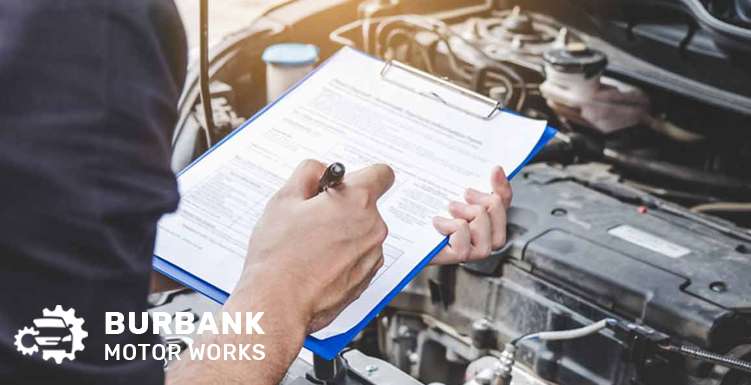
Address: 2208 W Burbank Blvd, Burbank, CA 91506

Mon - Fri: 7:45 Am - 5:30 Pm
Sat: 8:00 Am - 2:30 Pm
Sun: Closed
We'll Be Closed This Sunday – April 20th

Address: 2208 W Burbank Blvd, Burbank, CA 91506

Mon - Fri: 7:45 Am - 5:30 Pm
Sat: 8:00 Am - 2:30 Pm
Sun: Closed
Regular cleaning and periodic tune-ups to keep their vehicle in good condition are not all that every car owner needs. Critical mechanical parts of the vehicle need to be regularly checked for fluids required to operate properly. Let’s know about those five essential fluids that every car owner should check regularly.

Engine oil works to keep the car’s engine parts smooth. This helps to keep engine parts cool and prevent rusting. Regular checking of engine oil keeps the engine working well for a long time. It is very important to use the right type of engine oil to run the car’s engine without any problem.
For better performance of the car, use the grade of oil recommended by the company. Costly repairs can be avoided by regular engine oil checks. Changing the oil at the scheduled time makes the engine work well for a long time.
Coolant or antifreeze works to control the temperature of the engine. This helps in maintaining the engine at the right temperature during summer and winter seasons. Regular checking of coolant can prevent damage to the engine.
It is very important to flush the cooling system at regular intervals and change the coolant. Using the wrong type of coolant can damage the engine. Traces of oil or other waste in the coolant can be a sign of head gasket failure.
The transmission fluid wears down over time. This keeps the parts of the transmission smooth during gear shifting. Regular checking of transmission fluid makes the transmission of the vehicle last longer.
It is very important to have the brake fluid in the right level and position. This helps your vehicle’s braking system work properly.
The brake fluid should be clear or light yellow, dark color is a sign of contamination. It is necessary to use the type of brake fluid prescribed by the company for safety. There may be air in the hydraulic line when the brake pedal feels spongy.

Power steering fluid helps to rotate the steering easily. When driving at low speeds, less force has to be applied to the steering.
Regular checking and maintenance of these five vital fluids of the car is very important. Each fluid has its own specific function. With regular checks, the car runs without any hassle for a long time.
Not changing engine oil regularly can cause serious damage to the engine. Old oil gets contaminated with dust and garbage. This increases friction in the engine parts and can cause engine damage.
Using the wrong type of coolant can damage the engine. The chemical composition of different coolants is different. Incorrect coolant can lead to corrosion in the engine and reduced engine capacity.
The transmission fluid begins to become dirty and black or smell of burning. There is trouble shifting gears. All of these could be signs of chronic or low fluid.
Contaminated brake fluid appears dark or cloudy. The clean brake fluid is light yellow. Contaminated fluid reduces brake capacity. If brake performance decreases, the fluid should be replaced immediately.
Call us for booking an early appointment and get all your car related problems solved by our experts.